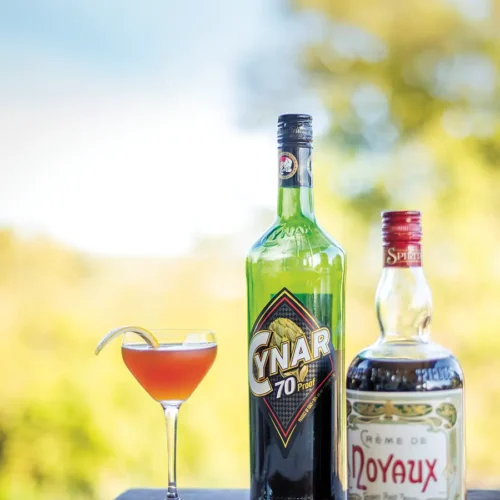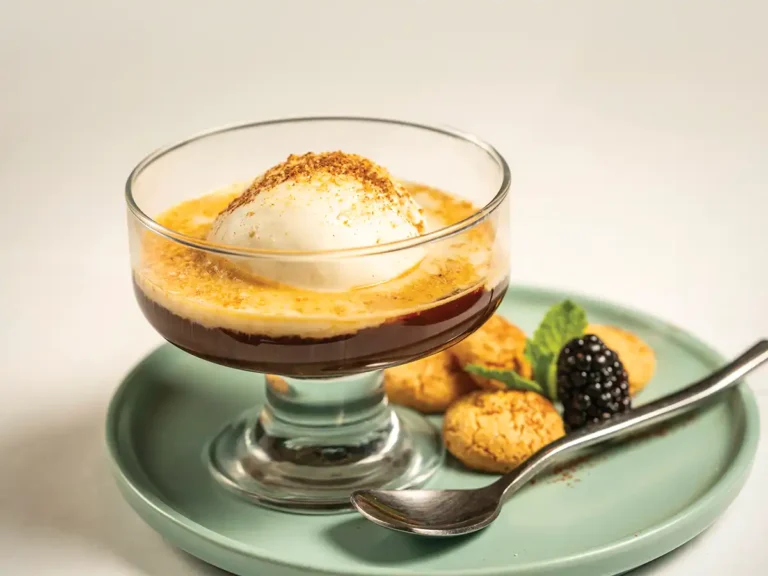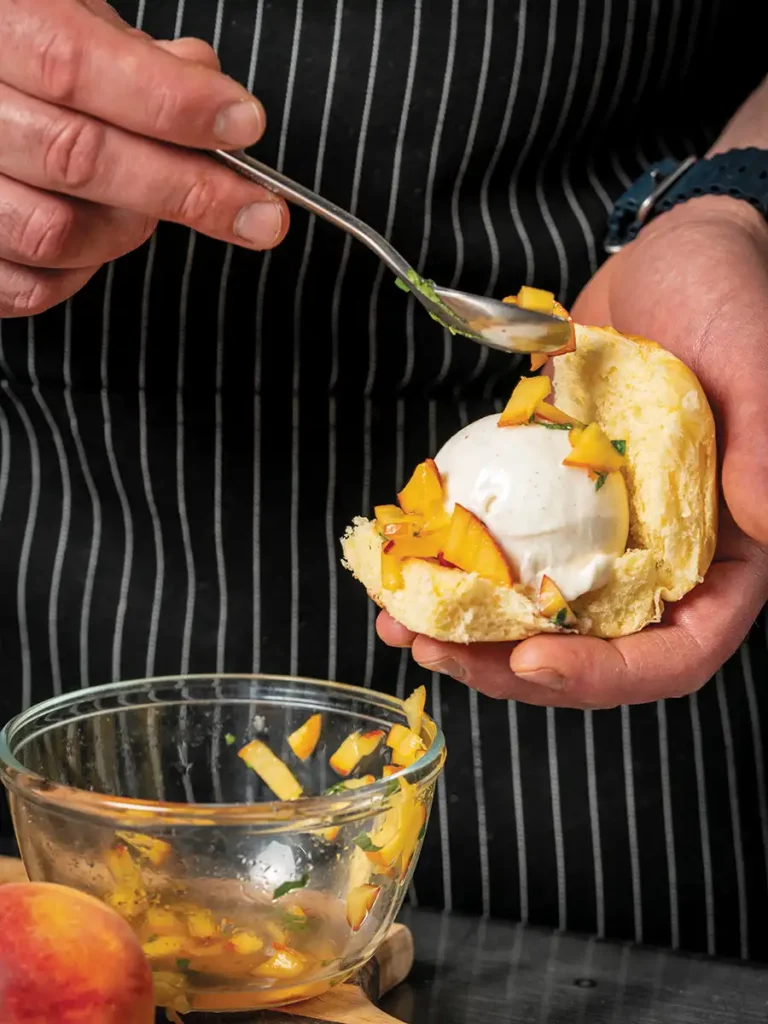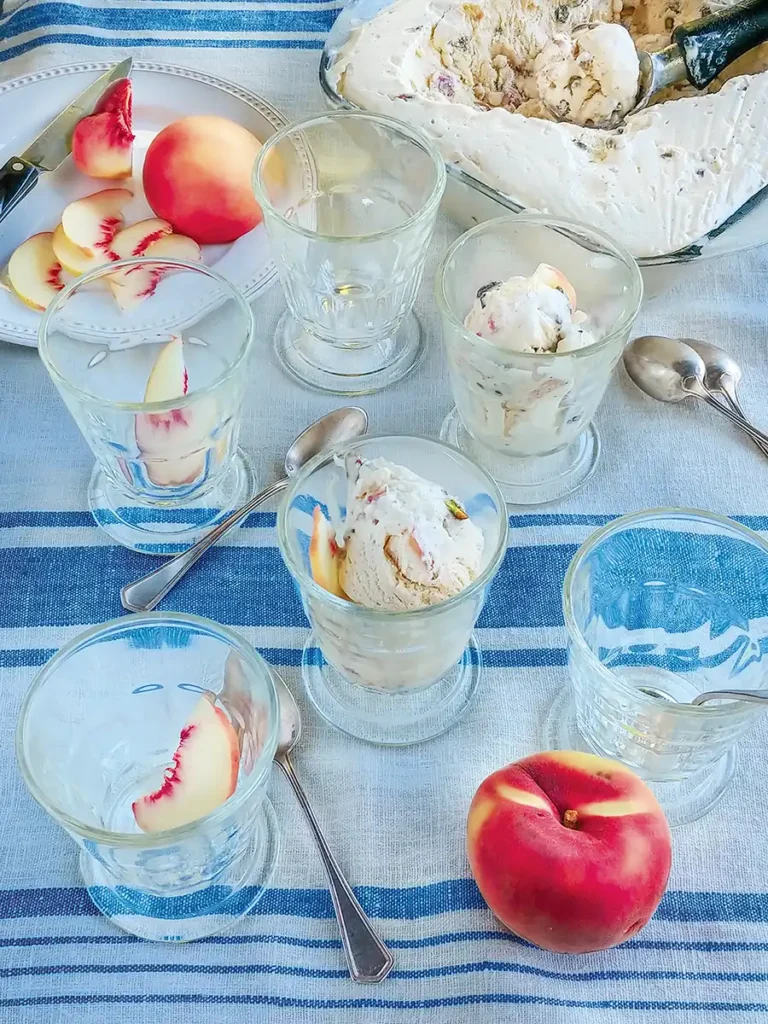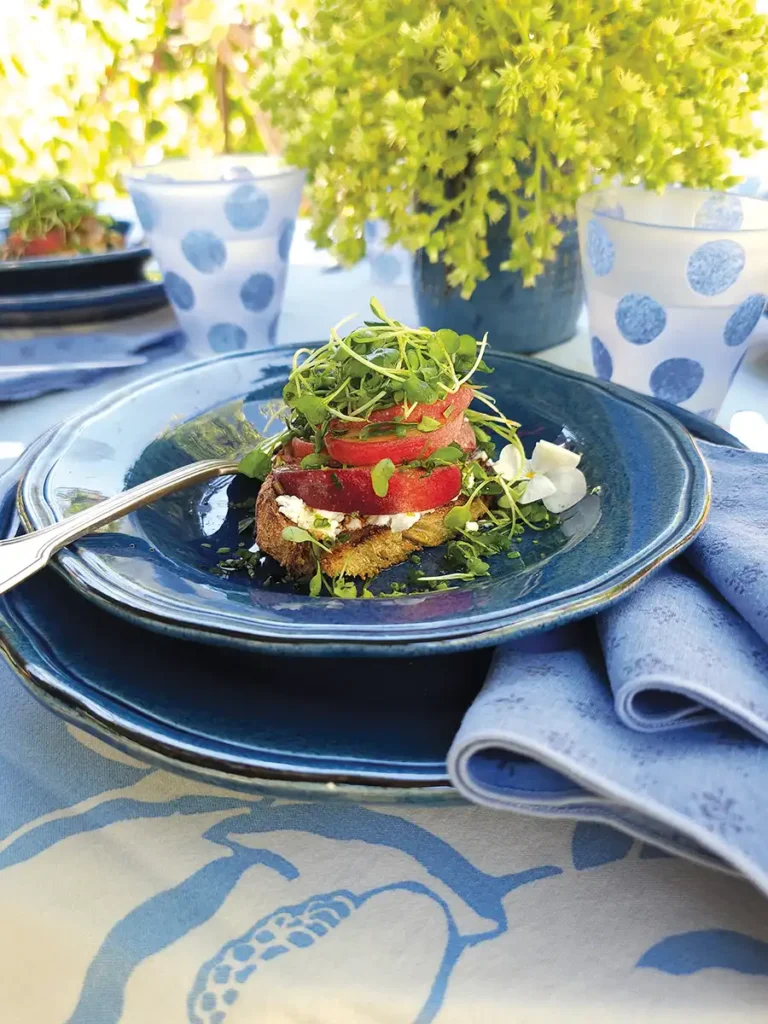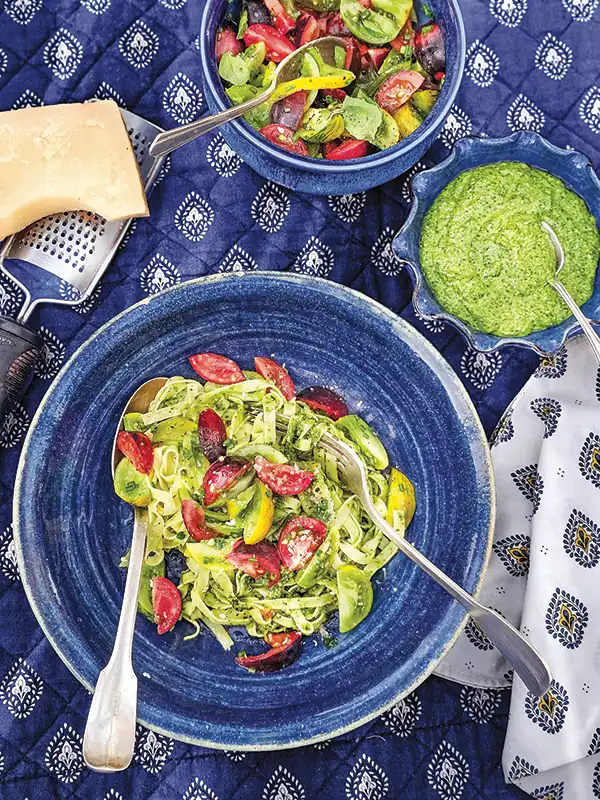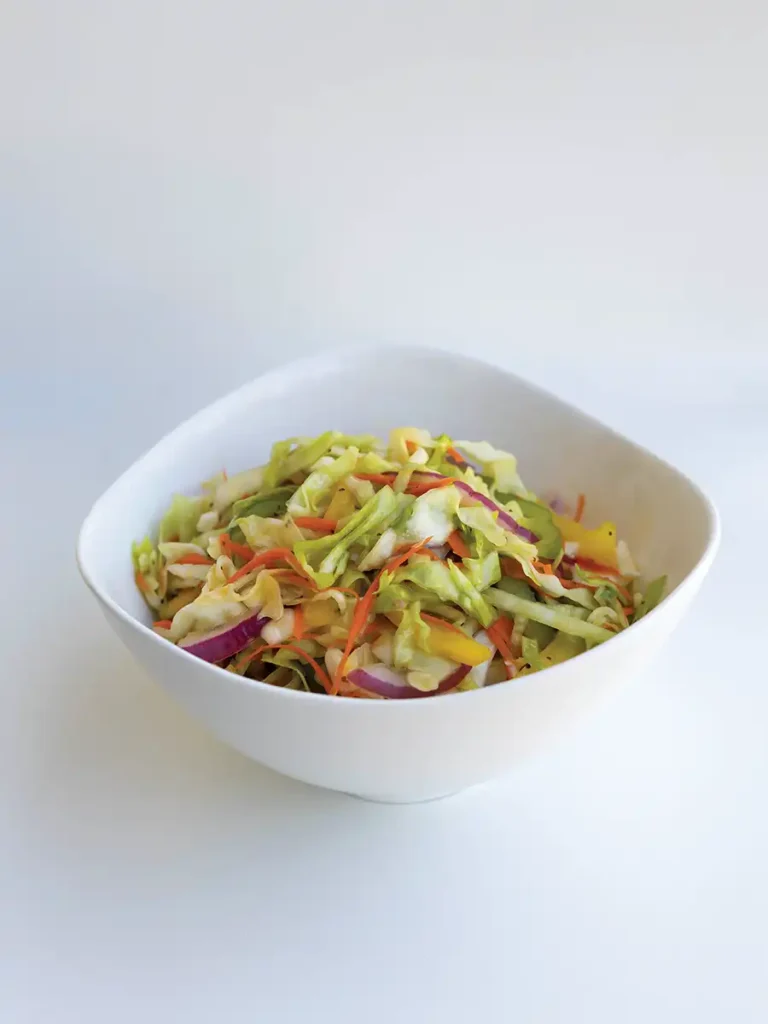Pseudonymous Seed
Knock One Back with Nigella
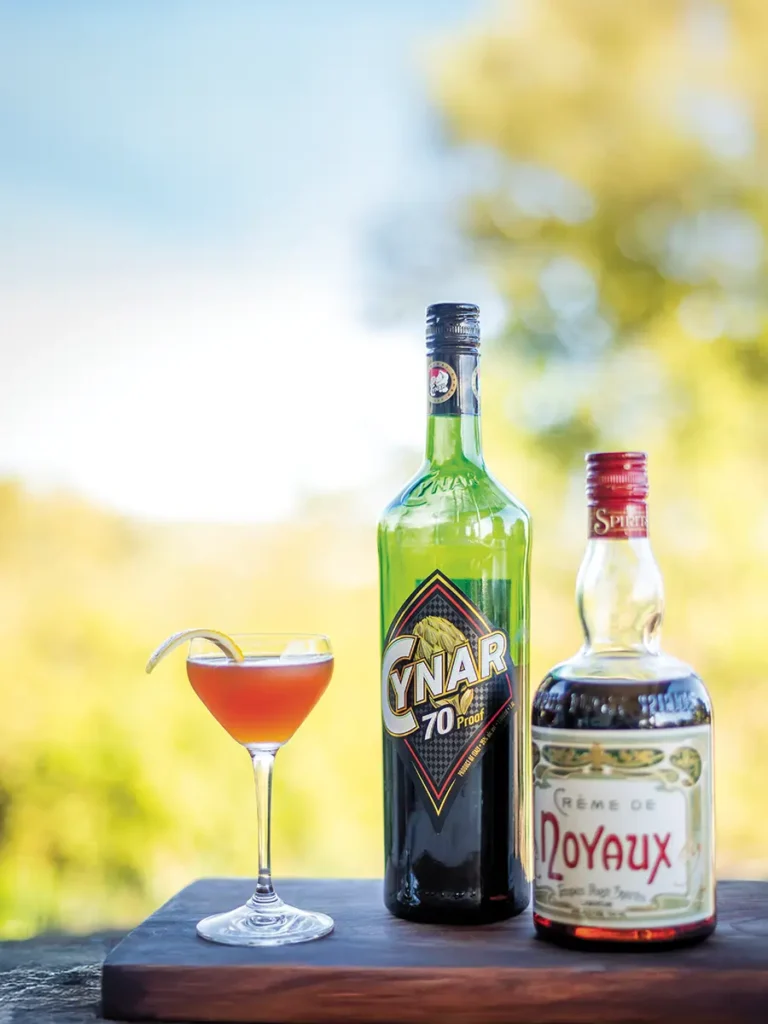
This spring’s drink seems as if it was created after Ted Allen left a mystery box at my doorstep, but I promise it’s a sassy seasonal delight. I insist something whipped up with the help of artichoke, apricot and cherry pits, juniper and the cocktail’s star ingredient—nigella seeds—really works. (Also note: Artichoke, apricot and cherry are all in season.)
But those nigella seeds are the inspiration for the drink’s name—the Pseudonymous Seed Cocktail. To get Latin for a sec, Nigella sativa—the name for both the flowering plant and its seed—is also called black caraway, black cumin, nutmeg flower, Roman coriander, black onion seed or kalonji. (This tear-shaped dark seed has so many aliases, you’d think someone put it into the witness protection program.) Often used in Indian, North African and Middle Eastern cuisines, its zippy flavor profile suggests distinct savoriness—think shallot, oregano, black pepper. World kitchens feature nigella in a host of ways: in naan or dosa, as a kicker for roast vegetables, as a crunch in grilled cheese. It’s a mighty mite.
I’ve worked the seeds into the drink twice to keep underlining the flavor. You infuse some gin with nigella to add kick, particularly as matching Indian spice notes with gin performs exponential multiplication of botanicals. You also make a nigella seed simple syrup, so the sweet you add to the cocktail ends up more round, less saccharine. And that sweetness gets cut some by the lemon juice, but that’s Meyer lemon, so you get a bit sweet there, too. Any good drink is a Wallenda balanced high on its wire.
For what such claims are worth, nigella seeds contain compounds known to be antioxidants, others that reduce inflammation, and animal studies suggest it might protect the liver from damage. This is far from hard science, plus you’d probably need to consume enormous amounts of the seeds to make any difference, but even being able to think your drink might help your liver and not hurt it is comforting, no?
I do apologize for the two relatively unusual liquors required to complete the drink, but I promise both will have other uses and be welcome additions to your cabinet. I’ve praised the Italian Cynar before—way back in 2014 with the Wet Your Thistle cocktail (issue #23). And the artichoke-labeled amaro has become a beloved mixer for me, adding a pungent herbal bitterness to all sorts of drinks, from a Mezcal Martinez to Negroni variations. It’s really not that ‘choky, more vegetal and earthy, comprised of a proprietary and non-publicized 13 herbs and plants.
Also a bit puzzling at first blush, the Crème de Noyaux has no cream—that milky texture comes from a higher sugar level than many liqueurs, and the crème is the one in the phrase crème de la crème—but has a wonderful 19th century French history. Distilled from apricot and cherry pits, dyed a vivid red thanks to cochineal (a scale insect, so this is not a drink for vegans, sorry, or anyone who goes and finds what the bugs look like), it’s basically liquid marzipan. Think of it as a heartier almond-flavored cousin to Amaretto. Even better, Novato, CA, distiller Tempus Fugit has revived the product with a fine rendition, so you get to go Californian with it. Supporting Tempus Fugit is easy, given their mission is to re-create fine rare spirits that were once staples in pre-Prohibition cocktails and are currently hard or impossible to access. Nothing like getting the chance to lap down some history.
Alas, the Pseudonymous Seed Cocktail is not the most gorgeous in the glass. Think apple cider in a rose taupe hue and cloudy consistency. But it is bracingly scrumptious, one of those drinks that truly becomes a new, unified composition and not merely a hit of gin on this sip, a touch of Cynar on that. Sometimes a seed of hope is the inoculation that just the right amount of boozy bitterness brings.

